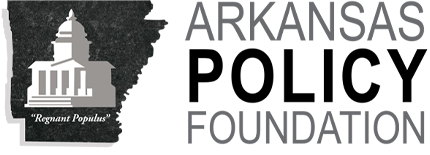“It’s almost like they’ve been cheerleading for [a recession]. It’s understandable from their point. Politicians and pundits don’t lose their jobs when there’s a recession, but real, hardworking Americans do. People should remember what the last recession was like before they start rooting for another recession, even if it would benefit their electoral ambitions.” U.S. Sen. Tom Cotton, R-Arkansas. Arkansas Democrat-Gazette, August 22, 2019
(August 2019) A near-daily barrage of media reports and political speculations claim the U.S. economy has either entered a recession or faces one in the near future. Recent events are reminiscent of 1992 when Arkansas Gov. Bill Clinton and others claimed economic conditions were contracting, though it was later revealed that the U.S. economy had expanded since March 1991.1
One characteristic of these recession claims is non-reliance on any widely-accepted indicators to build a case. Instead, proponents tend to rely on emotions and an alleged ‘gut-sense’ to argue the economy is in a contraction.
GDP Is Expanding
Gross Domestic Product measures the value of final goods and services produced in the U.S. One non-technical media definition equates recession with two consecutive quarters of negative GDP. Yet GDP increased 2.1% in 2Q-2019 and 3.1% in 1Q-2019, data from the U.S. Bureau of Economic Analysis shows.2 Positive GDP is synonymous with expansion, not recession.
Employment Is Also Expanding
The U.S. is unique among OECD countries for having a widely-accepted business cycle arbiter: the NBER. The nonprofit’s Business Cycle Dating Committee notes, “During a recession, a significant decline in economic activity spreads across the economy and can last from a few months to more than a year.” The panel relies on five indicators: real GDP; payroll employment; real income; real sales; and industrial production. Employment, the most important, has expanded each month in 2019, adding more than 1.1 million new jobs.3 Gains in employment occur in expansions, not recessions.
Income, Sales and Industrial Production
Another indicator followed by the NBER panel has increased, while the other two have declined in 2019. Real personal income less transfer payments was higher in June than in January.4 Industrial production, which measures the physical output of the nation’s mines, factories and utilities has declined.5 Real manufacturing and trade industry sales, is also lower this year.6 Their decline suggests a manufacturing sector slowdown, not an economy-wide recession.
Inverted Yield Curve
The yield curve for U.S. treasuries is said to invert when a short rate such as the three-month Treasury bill is higher than the long-term benchmark, the 10-year note. The Federal Reserve Bank of New York notes research “documents the empirical regularity that the slope of the yield curve is a reliable predictor of future real economic activity.”7 The curve has inverted.
Forecasting Cyclical Turns
Employment, income, sales and production are coincident indicators that present a real-time economic picture. By contrast, leading indicators attempt to present a future view of the economy. The Policy Foundation used coincident indicators a decade ago to publicly forecast recession8 and expansion9 prior to the NBER’s formal announcements.
Conclusion
With the exception of employment, the coincident indicators are overlooked by most observers. It’s premature, in any cycle, to suggest a recession is underway until all four coincident indicators have peaked and contracted for at least one quarter. This has not occurred, though it’s certain the status of the economy will remain the subject of speculation into 2020.
— Greg Kaza









